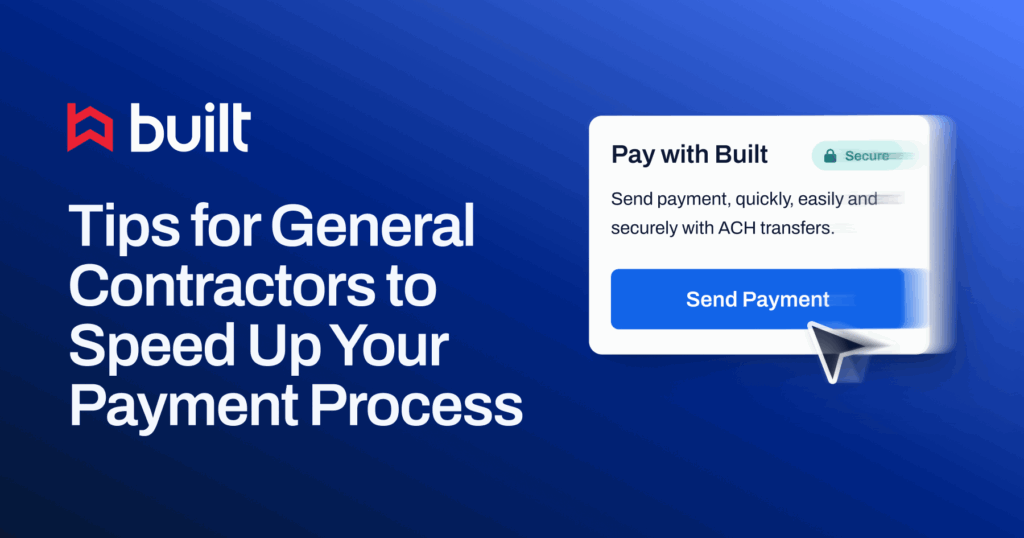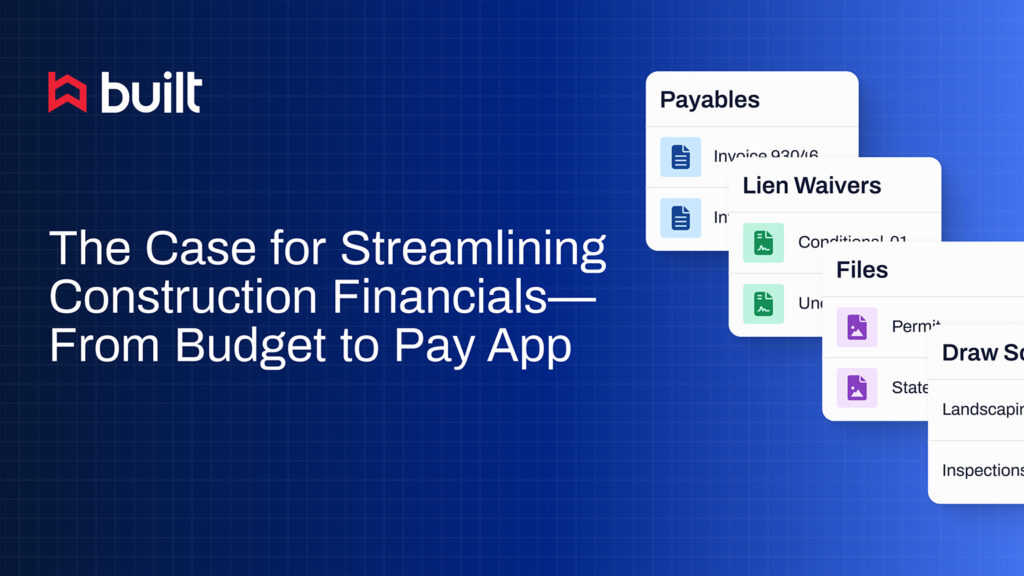
Additional Documents to Submit with a Payment Application

No matter how much we love what we do, nobody wants to work for free. Payment applications are some of the most important documents in a construction project. However, turning in a payment application isn’t always as simple as creating an invoice and emailing it–additional documents are often required. Project owners and general contractors may also have their own individual document requirements which add to the complexity.
Knowing which additional documents are required to be submitted with a payment application is critical. Fortunately, the contract will list which documents are required to be submitted with each application, so be sure to always read your contract carefully!
Let’s break down some common documents that may be required.
Schedule of Values
A Schedule of Values (SOV) is a comprehensive list of each work item involved in a project, as well as each item’s cost–essentially serving as a record of the entire cost of a project from start to finish.
The SOV is attached to the invoice and is used to show progress of the project in relation to the payment application. Because an SOV displays the percentage of work completed by phase, and shows how much work is remaining, it is a valuable tool that general contractors and project owners use to project future costs and determine if current billing is accurate.
Change Orders
A change order is an agreement that makes changes to the scope of work included in the contractor’s existing construction contract. This includes work that is added, removed, or substituted.
Contractors and owners may require that copies of approved change orders be submitted as they are billed for. This is especially important when billing for a change order that hasn’t been formally approved, as evidence that someone authorized the additional work is required. A detailed breakdown of the costs associated with the change order may also be requested, possibly including invoice copies as backup.
Contractor’s Sworn Statement
A contractor’s sworn statement is a form completed by a general contractor or subcontractor that lists any subcontractors and suppliers that the contractor is using on the project. It shows how much each subcontractor or supplier is owed to date and how much they’ve already been paid.
This document also contains information for all subcontracts, including the contract amount, the total amount completed, the amount previously completed, and the current amount due. It also includes a sworn oath, stating that the amounts provided are accurate and that the listed subcontractors and suppliers have been paid as shown on the statement. This form helps project owners to ensure that all subcontractors and suppliers have been identified and paid, preventing surprise liens.
Lien Waivers or Releases
Lien waivers or releases are legally-enforceable documents that waive or release the right to lien, usually in exchange for payment. They function as proof of payment on construction projects and typically include project information, the date through which costs have been paid, and the amount that has been paid.
Many owners or general contractors require signed lien waivers or releases with each payment application to show that payments have been made for the previous period. Lien waivers may need to be provided from both upper and lower tier subcontractors, suppliers, and your company.
Waivers can come in many forms, so be sure to use those provided by the owner or general contractor to avoid problems with your application. Some owners may require both unconditional and conditional lien waivers, which can often be provided on the same form.
Copies of Current Invoices
Financial institutions may require copies of current period invoices from subcontractors and suppliers. These invoices may be matched to the amounts on the payment application, as well as the submitted conditional lien releases, to prevent overbilling for work that hasn’t been completed or billed for.
Certified Payroll Reports
Certified payroll reports document the amount that was paid to each employee in wages and fringe benefits. If these reports aren’t submitted by their due date or aren’t complete, payment to both the general contractor and subcontractors may be delayed. These reports are typically reviewed by the general contractor and the owner to ensure that proper wages and benefits have been paid.
Certified payroll reports are required on federal Davis-Bacon wage or state prevailing wage projects. These projects help ensure that employees are paid in accordance with local wage requirements. Public projects, such as those for governments, schools, or other public agencies, are usually subject to these requirements.
Streamline Your Document Management Today
Keeping track of all the different documents required for payment can be a nightmare. Luckily, we can help! With Built, you can streamline your project documentation and payment management–transforming slow, inefficient processes into simple, digital workflows.
Click here to request a live demo and learn how you can:
- Help ensure compliance with electronic legal documentation for every job
- Improve lien waiver management from start to finish
- Speed up payments to keep the best subcontractors on your jobs
- Integrate with key accounting systems with ease
Related Posts


The Case for Streamlining Construction Financials—From Budget to Pay App







